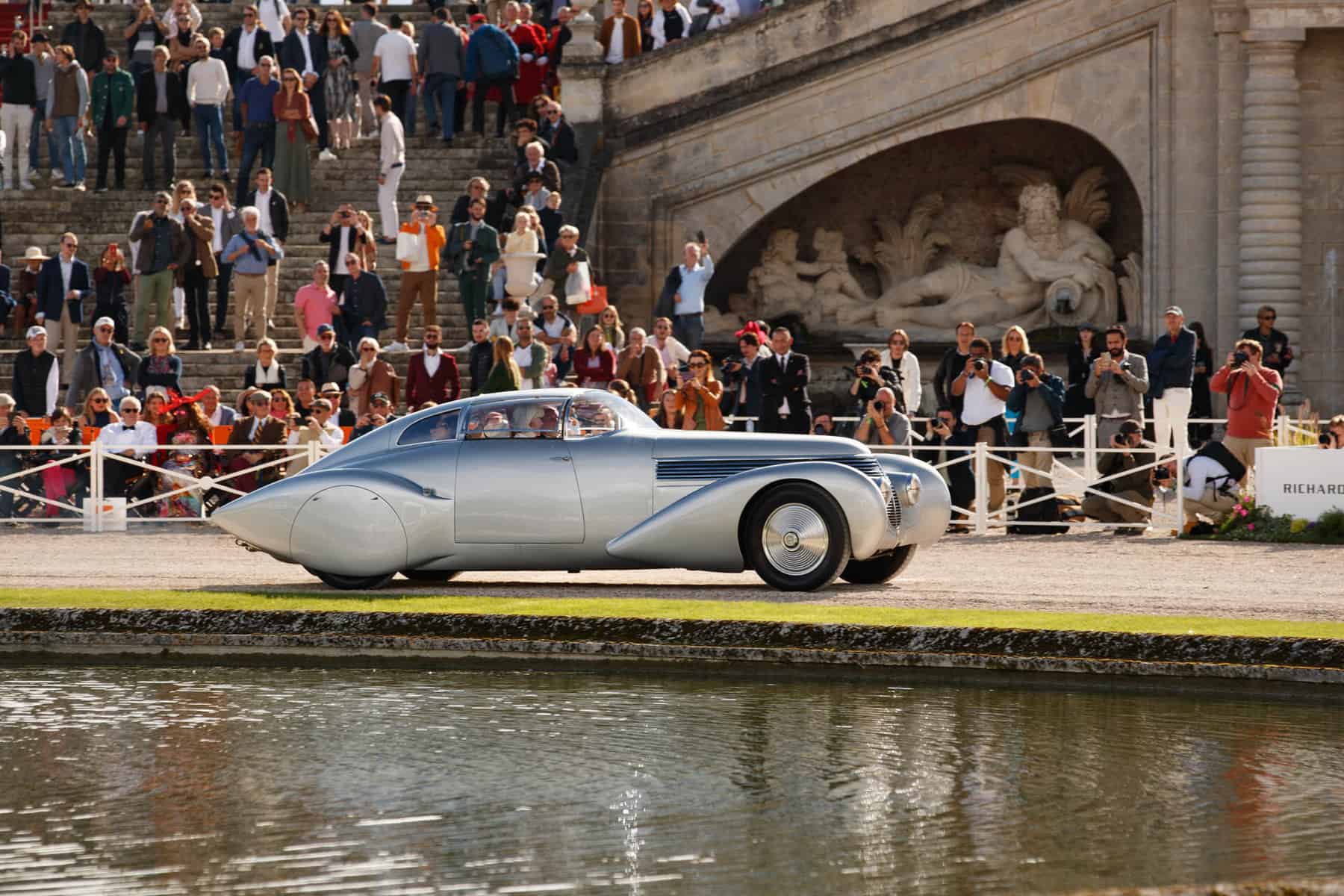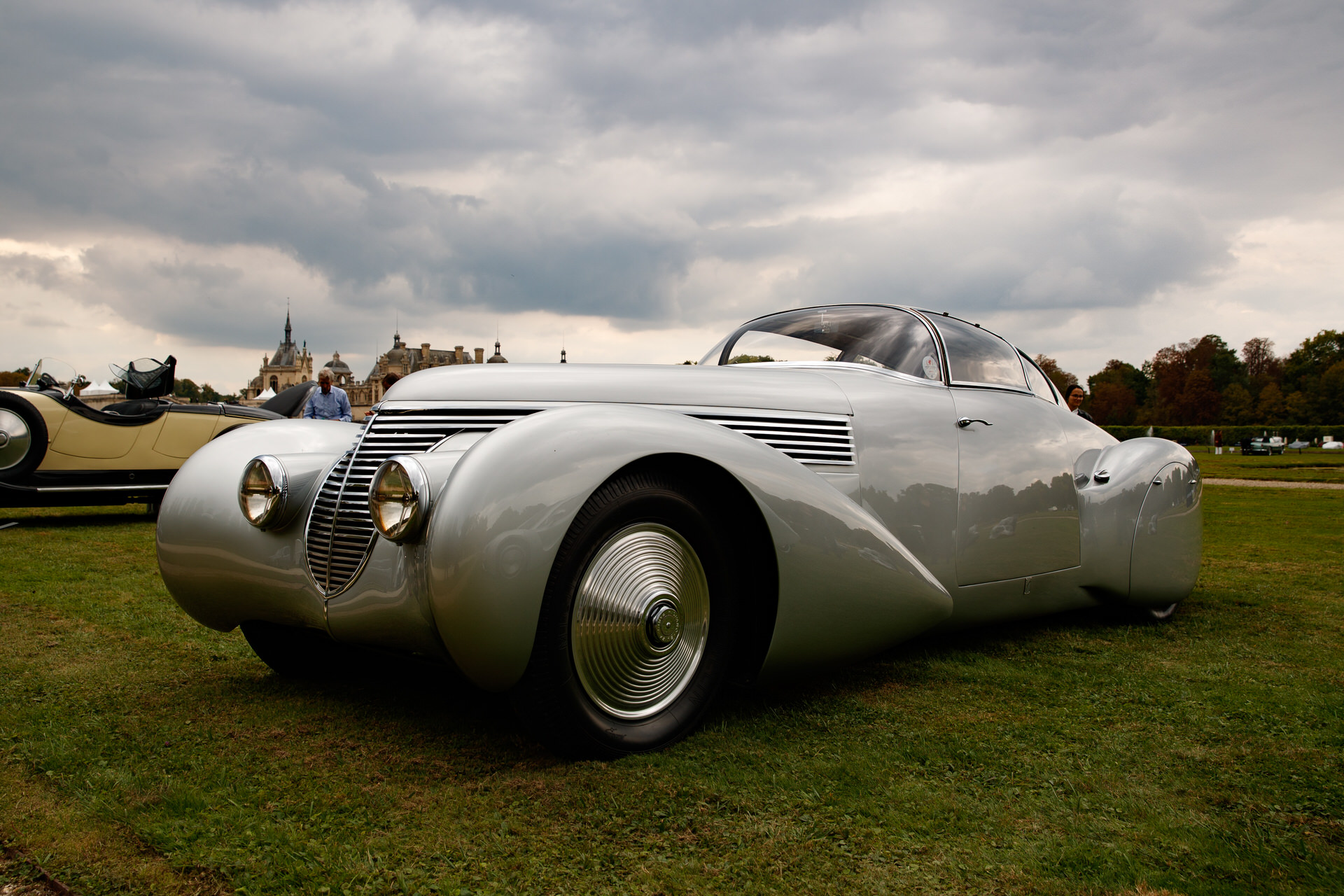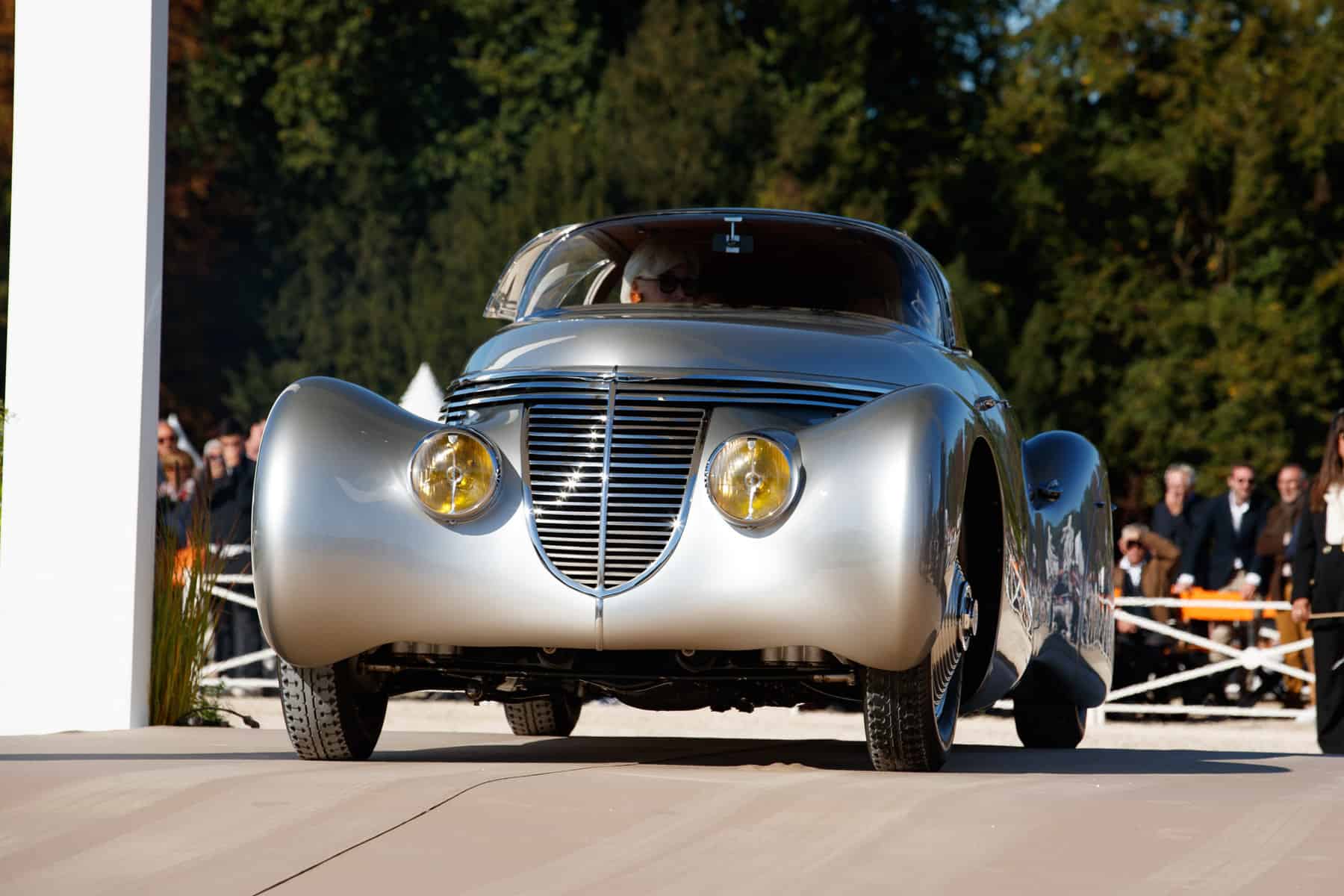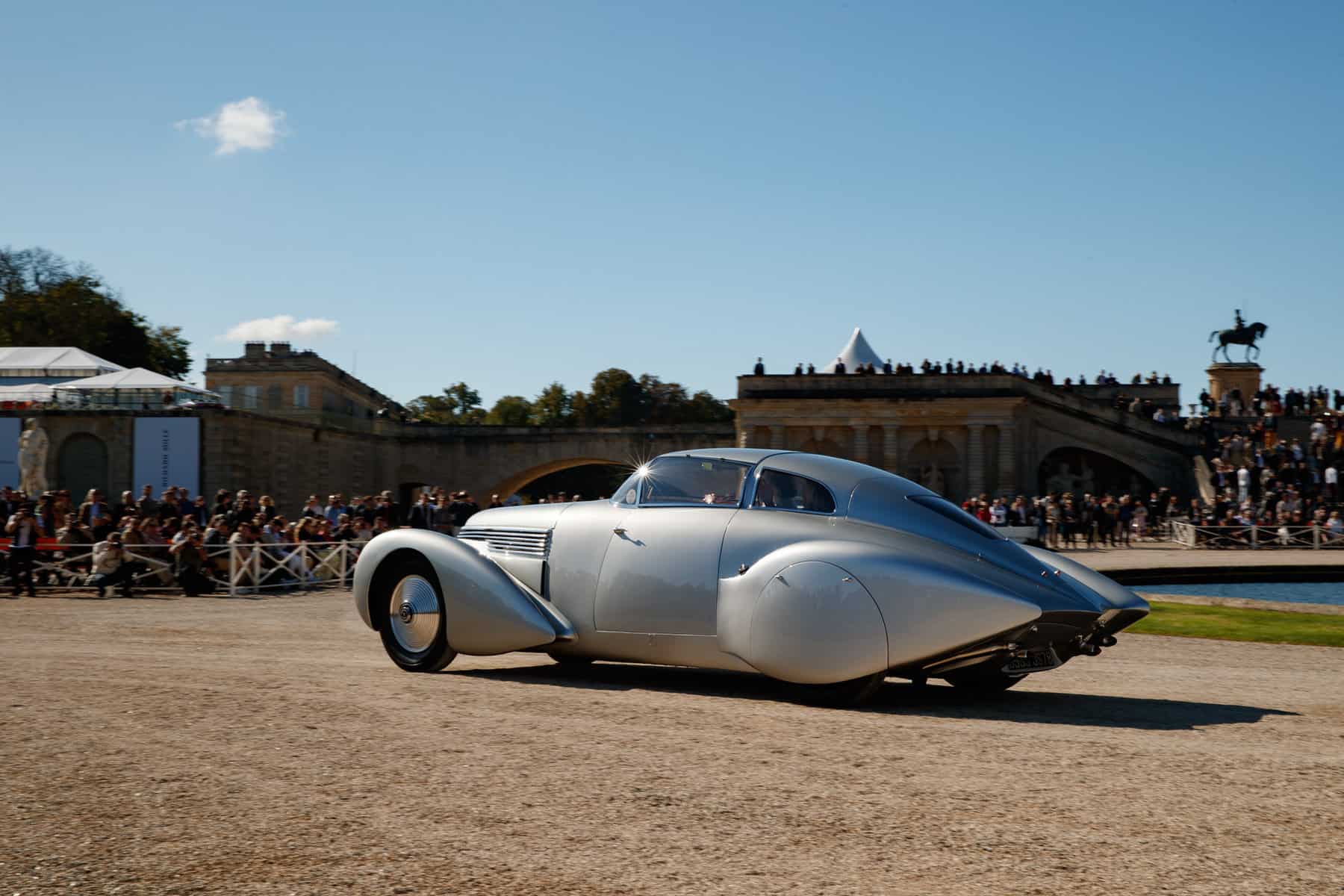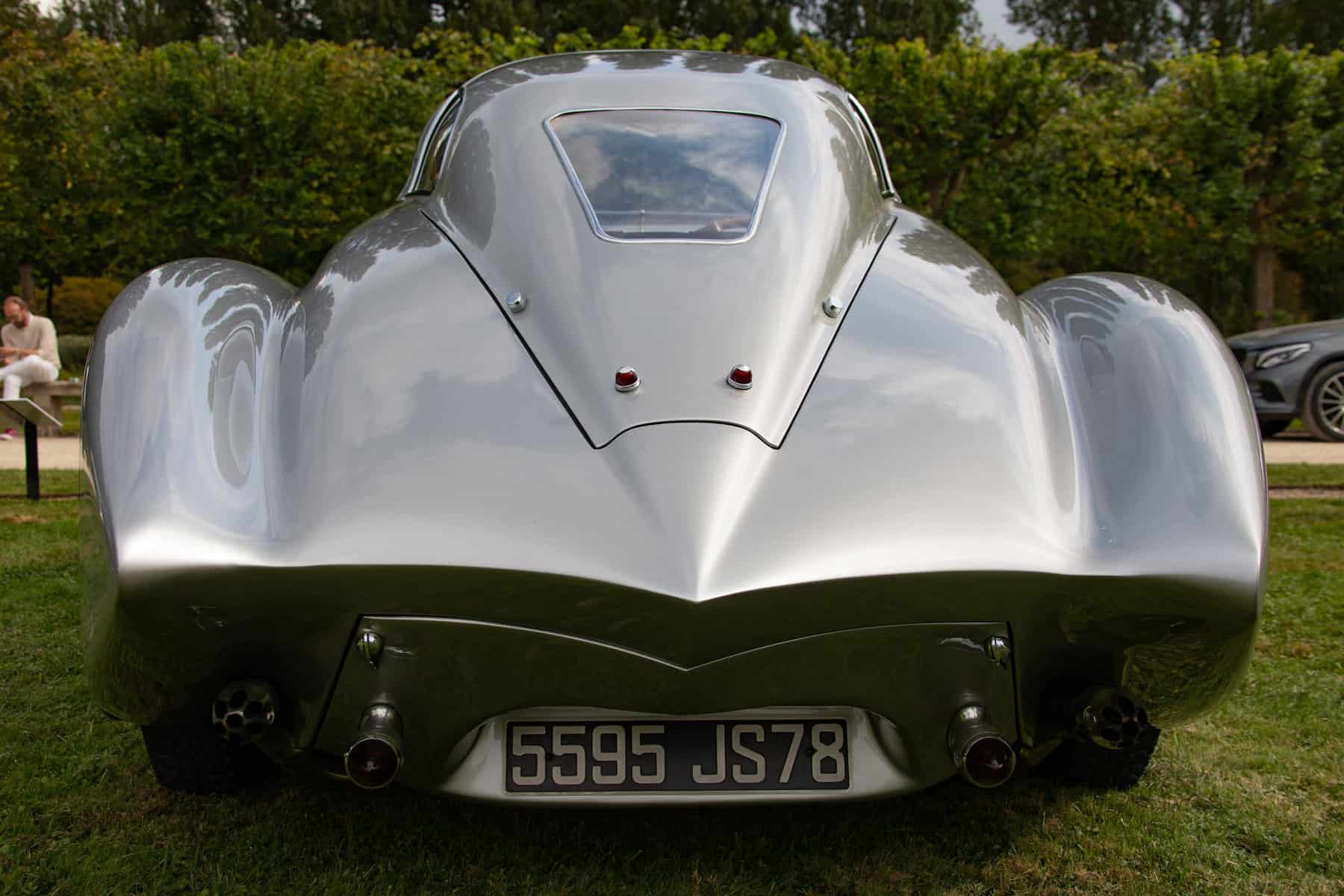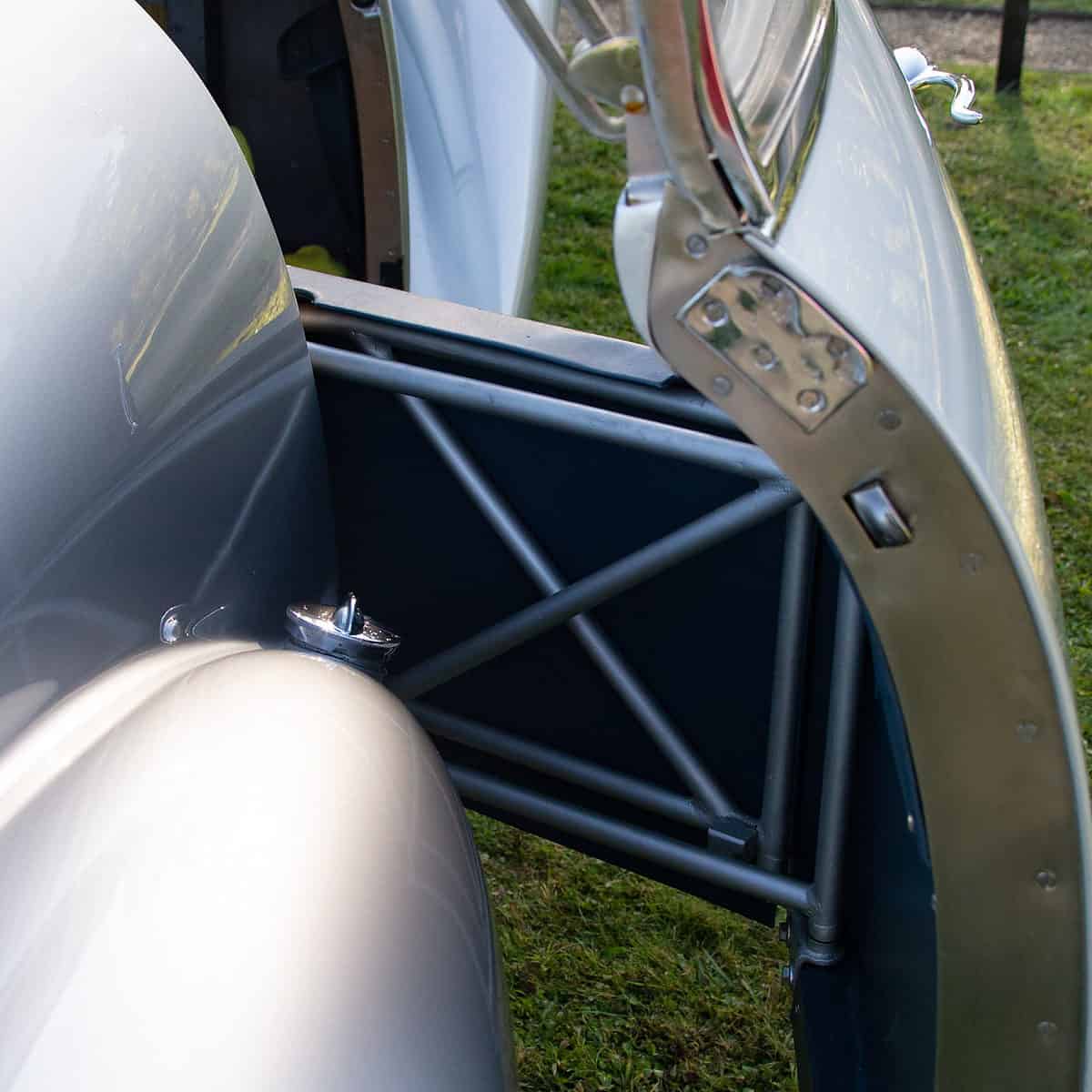Hispano Suiza H6C Xenia
How the unique star came to be
WORDS & IMAGES BY: WOUTER MELISSEN
There are numerous tales of wealthy heirs squandering their inherited fortune. That certainly was not the case with André Dubonnet, the grandson Joseph Dubonnet of aperitif fame. André Dubonnet was a man of a wide range of talents, many of which contributed to the creation of this Hispano Suiza H6C Xenia in 1938.
André Dubonnet was born in 1897 and despite his wealth enlisted to the French army during the Great War. He originally served with the artillery and after receiving commendations joined the French air force. He quickly became an excellent pilot and patrol leader. Among the planes he flew was the Hispano Suiza–engined SPAD XIII. In August 1918, he reported his fifth victory and was later awarded the prestigious Médaille Militaire.
After the Armistice, Dubonnet turned to motor racing. In 1921, he won at Boulogne with a specially prepared Hispano Suiza. He did so again two years later, prompting the 8.0-liter sporting model from Hispano Suiza to be nicknamed the “Boulogne.” Another remarkable drive came at the 1926 British Grand Prix at Brooklands, where he took over from Robert Benoist, who had fallen ill during the race. Despite being unfamiliar with the track, having never driven the car, and still wearing his lounge suit, Dubonnet brought the Delage home in third place.
During the 1920s, Dubonnet developed a strong desire to create a car of his own design. His engineering work initially focused on a proprietary and patented independent suspension system. Developed together with engineer Gustave Emile Chédru, this was known as the système Dubonnet, it used a rigidly mounted axle with, on either end, an enclosed coil spring and damper. This was connected to the hub through a short leading arm. Not necessarily designed to improve road holding, the independent front suspension above all improved comfort by eliminating the pitch motions created by the stiffly sprung beam axles.
Dubonnet first fitted the independent suspension on the front of a special Hispano Suiza that was shown at the 1932 Paris Auto Salon. The technology sparked quite an interest, and among the companies that acquired a license was General Motors, which introduced the Dubonnet system as the “Knee Action” ride, first available for the 1934 model year on select Chevrolets and Pontiacs. The system worked well but required careful maintenance. The main issue was leakage of the lubricating oil that was encased with the coil spring and damper.
After the launch of his suspension system, Dubonnet looked at other ways to improve the performance of his cars. He was particularly fascinated by the new slippery designs pioneered by the likes of Chrysler with the Airflow and Tatra with the T77. He turned to another veteran of the Great War, Jean Andreau. He had joined the engineering department of the French army after getting seriously injured in the first days of the war. Like Dubonnet, Andreau was a man of many talents, as his designs included a novel suspension system and a variable stroke engine, briefly used by Citroën.
Andreau, however, is best known for his work in the laboratory of the Société des usines Chausson. Specializing in building bodywork for buses, the French company obtained Andreau’s services to create a system to calculate the drag figure, or Cx, of their designs. Along the way, he also penned several very efficient designs, including one built by Labourdette on a Peugeot 402 chassis and one for Dubonnet that was fitted on a Ford chassis and built by Letourneur & Marchand. Known as the Dolphin, the custom-bodied Ford had a 174 km/h top speed. This was a remarkable improvement over the 129 km/h top speed of the standard Ford Sedan it was based on. Ford took note and acquired the distinct prototype for further assessments in the United States.
Having created several successful prototypes, it was now time for Dubonnet to combine all these efforts for his next car. Completed in 1938, the Dubonnet was known as the Xenia in remembrance of his second wife, American-born Xenia Howard-Johnston. Their marriage lasted just four years as Xenia sadly passed away in 1936. Dubonnet remarried in 1937, but still decided to name the car Xenia.
The Xenia was built on the same Hispano Suiza H6B underpinnings as the 1932 Paris show car. Its Vanvooren sedan style body was removed and the systèmè Dubonnet or “Hyperflex” suspension was fitted on all four corners. Dubonnet suggested this would provide the car with the suppleness of a cat and to underline that claim used a jumping cat for the logo of his company. Carried over from the Hispano Suiza donor car were the brakes. These featured aluminum-alloy brake discs and servo-assistance.
Dubonnet fitted a larger H6C engine in the H6B chassis. To a certain extent, the six-cylinder H6 engine was one half of the Hispano Suiza V-12 airplane engines. In H6C specification, the all-aluminum unit displaced close to 8.0 liters. Equipped with a single overhead camshaft and breathing through a single carburetor, it produced around 160 hp at 3,050 rpm. The straight-six was mated to a Hispano Suiza gearbox, which had four instead of the standard three forward gears.
To clothe the new Hispano Suiza-based machine, Dubonnet turned to Jacques Saoutchik. The Russian-born coachbuilder was no stranger to extravagant creations and was the ideal candidate to turn Andreau’s latest design into reality. He had penned a two-door coupe body that was much more pleasing to the eye than his earlier creations. The slippery shape featured headlights that were integrated in the teardrop-shaped front fenders, spats on the rear wheels, and a sharp tail. The dorsal fin fitted on Andreau’s Peugeot 404 and Ford Dolphin was fortunately missing, as were the bumpers and running boards. The underside of the car was also clad with bodywork to further reduce drag.
Perhaps the most striking feature of all was the single-piece wrap-around windshield. This was years or even decades ahead of its time. The curved doors represented another engineering tour de force, as they first opened sideways and then slid back. This system was later adopted for minivans and provides a very large opening into the Xenia’s cockpit. The seats and doors were upholstered with blue leather and the steering wheel was trimmed with wicker. In the sharp tail, a three-piece set of bespoke luggage was fitted.
The Xenia was ready in 1938 and was retained by Dubonnet as his personal car. It is still referred to as a Hispano Suiza H6B but in the engine bay there actually is a chassis plate that reads Automobiles André Dubonnet with Xenia as the type and 103 as the number. Presumably this refers to the car being the third of Dubonnet’s creations. In 1940, it was carefully hidden away only to resurface in 1946 when it led a parade commemorating the opening of a tunnel in Paris.
During the 1960s, it was acquired by Alain Balleret, who was the president of the French Hispano Suiza club at the time. He had the car completely restored and would own the Xenia for over three decades. He finally sold the one-off machine to American collector Charles Morse. It was restored again and first shown at the 2000 Pebble Beach Concours d’Elegance. Here it won a special award for the “Most Elegant Enclosed Car.” The following year, the Xenia was awarded Best of Show at the Amelia Island Concours d’Elegance.
In 2003, it joined the formidable collection of fellow American Peter Mullin: “The Hispano Suiza was added to my collection because this vehicle is truly a historic relic of the art deco era of coach craftsmanship. It’s more vital than ever for one-off vehicles like this one to be preserved and celebrated.” Mullin continues: “The Hispano Suiza uses a centrally mounted handle, so the doors effortlessly slide open and backward, parallel to the body. This unique element of the vehicle is undoubtedly one of my favorite attributes.”
Today, the unique Hispano Suiza Dubonnet Xenia is one of the star attractions of the Mullin Automotive Museum in Oxnard, California. It continues to be shown at events around the world with great success, most recently at the Chantilly Arts & Elegance Richard Mille where it won Best of Show.

